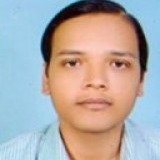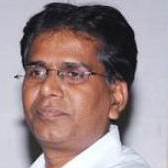International Journal of Information Technology and Computer Science (IJITCS)
IJITCS Vol. 5, No. 11, 8 Oct. 2013
Cover page and Table of Contents: PDF (size: 421KB)
Performance Comparison of Various Diversity Techniques using Matlab Simulation
Full Text (PDF, 421KB), PP.54-61
Views: 0 Downloads: 0
Author(s)
Index Terms
Maximal-Ratio Combining, Selection Combining, Equal-Gain Combining, Fading, Rayleigh Channel
Abstract
Due to the time-varying nature of the wireless channel and presence of limited resources for the signal transmission, which faces various detrimental effects such as path-loss, delay spread, Doppler spread, shadowing and interference make it very difficult to achieve sufficient data rates. To combat the effect of multi-path fading in the wireless communication system, the diversity combining mechanism has been introduced. In this paper, we have developed an algorithm for the performance evaluation of various spatial diversity combing techniques by using Matlab simulation. The developed new algorithm combine all three diversity techniques such as maximal ratio combining (MRC), selection combining (SC) and equal gain combing (EGC) techniques The combined diversity techniques algorithm computes and compares the MRC, SC, and EGC combing techniques theoretically by using the Matlab simulation.
Cite This Paper
Sanjiv Kumar, P. K. Gupta, G. Singh, D. S. Chauhan, "Performance Comparison of Various Diversity Techniques using Matlab Simulation", International Journal of Information Technology and Computer Science(IJITCS), vol.5, no.11, pp.54-61, 2013. DOI:10.5815/ijitcs.2013.11.06
Reference
[1]D. Brennan, “Linear diversity combining techniques,” Proc. IEEE, vol. 47, pp. 1075 – 1102, June 1959.
[2]R. Janaswamy, “Radiowave Propagation and Smart Antennas for Wireless Communications,” Kluwer Academic Publishers, 2000.
[3]L. C. Godara, “Handbook of Antennas for Wireless Communications”, CRC Press, 2002.
[4]S. Verdu, “Multiuser Detection”, Cambridge University Press, 1998.
[5]Vahid Tarokh, “New Directions in Wireless Communications Research,” Springer Science, New York, 2009.
[6]Andrea Goldsmith, “Wireless Communications,” Cambridge University Press, New York, 2005.
[7]H. Zhang and T. A. Gulliver, “Error probability for maximum ratio combining multichannel reception of M-ary coherent systems over flat Rician fading channels,” Proc. of IEEE Wireless Communications and Networking Conf., March 2004, vol. 1, pp. 306-310.
[8]Vivek K Dwivedi and G Singh, “Error-rate analysis of OFDM communication system in correlated Nakagami-m fading channel using maximal ratio combining diversity”, International Journal of Microwave and Wireless Technologies, vol. 3, no. 6, pp. 717-726, Dec. 2011.
[9]M. S. Patterh, T. S. Kamal and B. S. Sohi, “Performance of coherent square MQAM with Lth order diversity in Rician fading environment,” Proc. of 54th IEEE Vehicular Tech., 2001, vol. 1, pp. 141-143.
[10]S. Seo, C. Lee, and S. Kang, “Exact performance analysis of M-ary QAM with MRC diversity in Rician fading channels,” Electronics Letters, vol. 40, no. 8, pp. 485-486, April 2004.
[11]M. S. Patterh and T. S. Kamal,“Performance of coherent square M-QAM with Lth order diversity in Nakagami-m fading environment,” Proc. of 52nd IEEE Vehicular Tech., 2000, vol. 6, pp. 2849-2853.
[12]G. Fedele, I. Izzo and M. Tanda,“Dual diversity reception of M-ary DPSK signals over Nakagami fading channels,” Proc. IEEE International Symp. Personol Indoor, and Mobile Radio Commun., Toronto Ontario, Canada, Sept. 1995, pp. 1195-1201.
[13]I. AI Falujah and V. K. Prabhu, “Performance analysis of MQAM with MRC over Nakagami-m fading channels,” Proc. IEEE Wireless Communication and Networking Conf., April 2006, vol. 3, pp. 1332-1337.
[14]F. J. Altman and W. Sichak, “A simplified diversity Communication system for beyond the horizon links,” IRE Trans. on Commun. Systems and Techniques, vol. 4, pp. 50-55, March 1956.
[15]A. Annamalai, C. Tellambura and V. Bhargava, “Equal gain diversity receiver performance in wireless channels,” IEEE Trans.on Communications, vol. 48, pp. 1732-1745, Oct. 2000.
[16]A. Annamalai, C. Tellambura and V. Bhargava, “Exact evaluation of maximal ratio and equal-gain diversity receivers for M-ary Qam on Nakagami fading channels,” IEEE Trans. on Commun., vol. 47, no. 9, pp. 1335-1344, 1999.
[17]A. Annamalai, C. Tellambura and V. Bhargava, “Unified analysis of equal gain diversity on Rician ana Nakagami fading channels,” Proc. IEEE Wireless Communication and Networking Conf., 1999, pp. 10-14.
[18]N. C. Sagias, G. K. Karagiannidis, P. T. Mathiopoulos, and T. A. Tsiftsis, “On the performance analysis of equal-gain diversity receivers over generalized Gamma fading channels,” IEEE Trans. on Wireless Commun., vol. 5, no. 10, pp. 2967–2975, Oct. 2006.
[19]G. K. Karagiannidis, “Moments-based approach to the performance analysis of equal gain diversity in Nakagami-m fading,” IEEE Trans. on Commun., vol. 52, no. 5, pp. 685–690, May 2004.
[20]Sanjiv Kumar, P. K. Gupta, G. Singh, D. S. Chauhan,"Performance Analysis of Rayleigh and Rician Fading Channel Models using Matlab Simulation", IJISA, vol.5, no.9, pp.94-102, 2013. DOI: 10.5815/ijisa.2013.09.11
[21]Kuwar Pratap Singh, P K Gupta and G Singh. “Performance Evaluation of Enhanced Interior Gateway Routing Protocol in IPv6 Network,” International Journal of Computer Applications 70(5):42-47, May 2013. DOI: 10.5120/11962-7802



